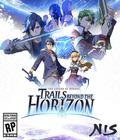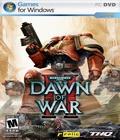Last month we spent some time detailing the single player campaign in Dawn of War II. We were introduced to the Chaos Marines in great detail. Got familiar with the different squad commanders, upgraded their skills and kitted them out in custom equipment. We also got a quick look at the Eldar, Orks and Tyranids, but didn't get a chance to play any of them as the single player story is focused on the Chaos Marines alone. Last week, Relic flew down from Vancouver for a visit and the dev team brought a shiny new build of Dawn of War II with them. Nestled inside was a fully functional multiplayer feature and we immediately started playing.
Upon starting, the first thing we noticed was the built-in paint feature. While it doesn't allow you to import any custom graphics (the developers didn't want to see a 13-year-old cruising around online with a Chaos Marine sporting a giant penis logo), the customization tools do allow you to choose from a selection of predefined logos as well as selecting the four colors that make up your troop armor. You are free to choose whichever colors you wish, leading to troops that look both imposing and laughable. When one of the other journalists started running around with a force of Chaos Marines decked out in hot pink armor, everyone who saw it let out a laugh.
After finishing with the customization options, it was on to the games. Dawn of War II offers the ability to play ranked and unranked games via Live for Windows as well as local LAN games. We opted for the LAN gaming. From here it was a matter of choosing a race and a hero, then jumping into the game. The combined selection helps determine your play style. For example, the Chaos Marines are the most well rounded, the Orks seem to have the advantage in physical strength, the Tyranids gain the advantage in numbers and the Eldar have their sweet sweet toys.
While choosing a race determines an overall style, picking a commander determines your specific type of play as well as the bonuses that are available for use. Each race has three commanders: a melee fighter, a ranged/defensive fighter and a support role. No matter who you choose, you still have access to the same racial units, but the individual commanders each have two unique special powers and different war gear items which grant different bonuses. How you make use of the abilities and items can make a huge difference over the course of the game.
Collecting resources in Dawn of War II is pretty straightforward. You don't. That's right, there are no peon supply lines to worry about. Instead, everyone gets a slow, but steady, supply of resources. You can increase your resource income by capturing two different types of supply points. So long as your team holds the supply points, you get the associated resource bonus. The resource for special attacks increases as you fight it out in combat, so if you want to be able to use your awesome powers you actually have to go rough it up a bit. Dawn of War II is very anti-turtle. If you turtle, you're screwed.
As far as building is concerned, you won't have to do much of that either. Yes, you can build some auxiliary stations at the resource points to help suck out resources even faster, but as far as the base is concerned everything pops out of your one uber building. If you want to upgrade, you just upgrade your main building to level two and three respectively. Because it's just a single building, you really don't even have to click back to it if you don't want to. The developers at Relic have put a handy dandy little base button right on your HUD. Click it once and it displays the base menu, without changing the view. This allows you to upgrade, deploy units, etc. at any time, all while keeping your eyes on the battle.
So, if there is no resource gathering and no base building, what is there to do in Dawn of War II? Combat. This is a real time strategy game that puts all of its emphasis on tactics and strategy. The whole multiplayer component is focused on getting out there, finding your opponent and effectively containing his or her army while you hold the majority of the control points on the map.
Each map has three control points. Each side starts with 500 points. Whenever one side holds more control points than the other, the loosing side's point total ticks down. Once the total hits zero, it's game over. The control point mechanic forces players to think strategically when playing because it's not simply a matter of rolling over an opponent's base to win. Well, you can do that, but the bases have an obscene amount of hit points, so while you're busy doing that, chances are good that your opponents are grabbing the control points and winning that way.
One of the games we played saw the opposing team owning the map for the first half of the game. As our team started to get organized we started focusing on the control points and before long a completely lopsided game had leveled out. Over the course of the day, this seesawing of the points happened over and over.
No game would be complete without plenty of cool units to use, and here Dawn of War II delivers in spades. As previously mentioned, all of the commanders have war gear items which grant extra bonuses. Unlike the single player game, where these items are found on the battlefield and then kitted out between levels, in multiplayer all of the items are on the commander at the start, but they are not enabled. To enable an item you have to first research it by clicking on it. Once researched, it can be enabled at any time.
First level units for each race are the typical grunts, with your standard melee and ranged fighters. The second tier units have a specific strength, but also a key weakness. This allows for a good deal of countering on the battlefield as players push for the advantage. If the game lasts long enough for tier three units to be built, it's time to haul out the big guns. Every race has a super unit in its third tier which basically steamrolls over everything in its way. Here is where the Eldar excelled. The Eldar Avatar is basically a big hulking giant flaming Eldar that stand a few stories tall. Imagine a pissed off version of the Fantastic Four's Human Torch crossed with the Hulk and you've got a pretty good idea of what this guy can do. Instead of walking around cover, the Avatar simply tore right through it as if it wasn't even there. At one point, our Avatar faced off against a competing Avatar in the center of the map. When the battle was finished, every structure in the immediate area was pretty much toast.
Map selection is where the Dawn of War II developers expect to hear some complaints, because the game is currently scheduled to ship with approximately six maps. Not to fear though, because according to Jonny Ebbert of Relic, the company plans on supporting Dawn of War II with free (yes free) DLC map packs. So more maps will be coming, they just won't all be there at the start. Given that those we did play felt balanced and varied, the selection shouldn't be an issue assuming Relic follows through on its promise. Given the choice of a full polished single player campaign and more multiplayer maps later versus more maps now and less time spent on single player, we'll take the former.
For the tech geeks out there, Dawn of War II will run on both Windows XP and Vista. It is also fully supported on both 32 and 64 bit versions of the OS. It's a bit of a step up graphically from it's predecessor, which may mean a hardware upgrade is required for some players. If you really want to push your system, a hardware upgrade will be a must. Running Dawn of War II with its highest graphics settings (maximum resolution, best quality textures, etc.) will require a 64-bit system paired with a high end graphics card. Running under a 32-bit OS, there simply isn't enough memory available to properly render everything and still run the game.
There were some hiccups during the day, but all of the issues we encountered had to do with networking. Once we were in a game and playing, everything looked good and played well. Much like our time with the single player campaign, leaving at the end of the day was difficult. This is a game that has been fun to play since we got our hands on it and we're looking forward to digging in a bit deeper as Relic still hasn't let us see everything. We'll keep bugging them though, as there is still more to check out – including co-op campaign play. Check back early next year for more details.
More articles about Warhammer 40,000: Dawn of War II











 Warhammer 40,000: Dawn of War II is set in the grim, war-ravaged world of Games Workshop's Warhammer 40k universe -- a dark, futuristic, science-fiction setting where armies of technologically advanced warriors, fighting machines and hordes of implacable aliens wage constant war.
Warhammer 40,000: Dawn of War II is set in the grim, war-ravaged world of Games Workshop's Warhammer 40k universe -- a dark, futuristic, science-fiction setting where armies of technologically advanced warriors, fighting machines and hordes of implacable aliens wage constant war.













































